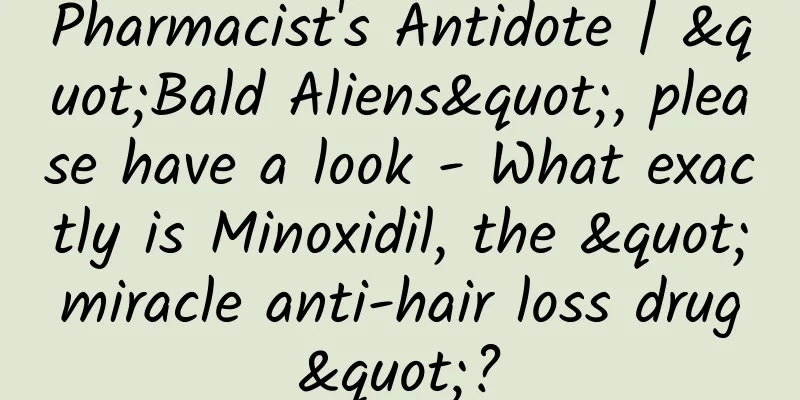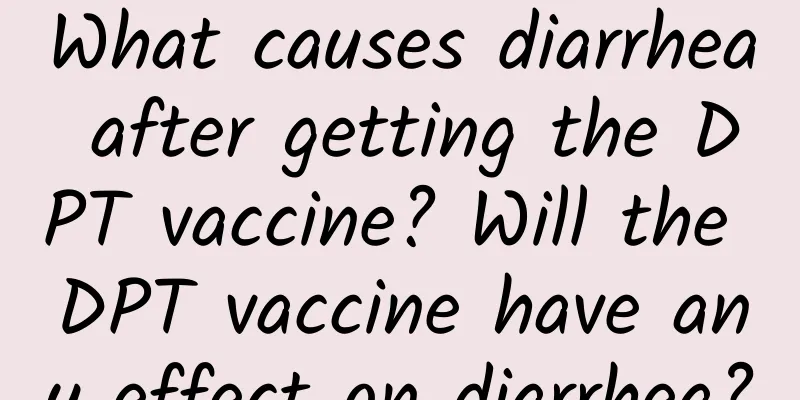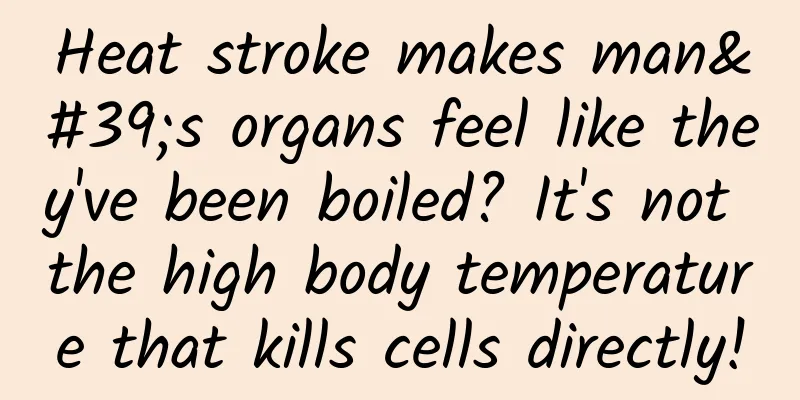Pharmacist's Antidote | "Bald Aliens", please have a look - What exactly is Minoxidil, the "miracle anti-hair loss drug"?

|
Time is not only a butcher's knife, but also a hair loss cream, which makes us bald but does not give us a way out. According to the data of the National Health Commission in 2019, more than 250 million people in my country are suffering from hair loss, and one in every six people has hair loss. Under the heavy pressure of work and life, more and more young people have fallen into the abyss of hair loss. Hair loss has become an increasingly serious social problem. So, can we just sit and wait for it to fall off? In recent years, a topical preparation called minoxidil has been enthusiastically sought after by young people and is known as the "magic drug to prevent hair loss." What exactly is minoxidil topical preparation? Is it really helpful in treating hair loss? The "anti-hair loss magic drug" that unexpectedly hits the mark Minoxidil was originally developed as an antihypertensive drug, but it was found to have a special adverse reaction during clinical application - hirsutism. This characteristic of minoxidil has brought hope to countless "bald people". In 1987, the U.S. Food and Drug Administration (FDA) approved the marketing of 2% minoxidil topical preparations for the treatment of male hair loss. Since then, minoxidil topical preparations have become a "miracle drug for preventing hair loss". There are currently three main types of minoxidil topical preparations on the market: liquid, foam, and gel. The exact mechanism of minoxidil topical preparations in treating hair loss is still unclear. Current research suggests that it may improve hair growth through the following mechanisms: increasing the duration of the hair follicle growth phase, enlarging shrunken hair follicles, and promoting blood circulation in the scalp. Suitable for various types of hair loss Many people have questions in their minds: Are there more ways to deal with hair loss? Of course! Clinically, minoxidil topical preparations can be used for common types of hair loss such as androgenic alopecia and alopecia areata. You may be a little confused, so I will continue to explain it to you. Androgenic alopecia is also known as seborrheic alopecia, which is characterized by atrophy of hair follicles, thinning and shrinking of hair, and even necrosis and loss of hair follicles. Alopecia areata, commonly known as "alopecia areata", is characterized by the presence of single or multiple hair loss patches with clear boundaries. Pay attention to these matters when using 1 Different concentrations, different target groups Minoxidil topical preparations are available in two concentrations: 2% and 5%. Generally speaking, the 5% concentration is recommended for men, while the 2% concentration is recommended for women. 2 Usage and dosage are particular Minoxidil topical preparation is applied twice a day, 1 ml each time. The medication must be used continuously, and it is recommended to use it continuously for half a year to more than one year, with an effective rate of 50%-85%. 3 A "shedding phase" may occur in the early stages of treatment This phenomenon usually occurs 2 to 6 weeks after starting treatment and disappears within a few weeks. It is normal and is a sign that the drug is beginning to work. 4 Common adverse reactions include skin irritation In general, the incidence of adverse reactions to minoxidil topical preparations is low and the symptoms are mild. Mild dermatitis, desquamation, itching, etc. are common on the scalp, which will gradually subside after stopping the medication. Although drugs are effective in preventing hair loss, if you do not develop good living habits, stay up late every day, and feel depressed, no matter how good the "anti-hair loss magic drug" is, it will not save your hair. |
<<: What is it like to have hemorrhoids? Please keep this Chrysanthemum Guide!
>>: If you have these five symptoms, be sure to be alert to the symptoms of sinusitis!
Recommend
Treatment methods for burn scars, scar removal can be done this way
Burns are a common accident in life. There is a h...
Pain in the upper left back of a woman
Modern women are under great pressure at work and...
What color is rice wine? Does drinking rice wine cause internal heat?
Rice wine is a mild food. Whether it is cold or h...
Three colors of blood in threatened abortion
When a woman has threatened miscarriage, she usua...
How long does it take to treat a thin endometrium?
Thin endometrium can be said to be a common uteri...
What should I do if I have vaginal itching?
The problem of vaginal itching should be dealt wi...
What are the causes of pelvic tuberculosis?
Tuberculosis mainly occurs after the endometrium ...
Eating bird's nest to prepare for pregnancy
Pregnant women have a new life growing in their b...
What causes abdominal distension after sex?
Many women may experience a noticeable feeling of...
How long does it take for endometrial polyps to recur?
Uterine polyps are a common gynecological disease...
Why do girls urinate frequently?
There are many reasons why girls urinate frequent...
How to treat high-risk cervical lesions
Cervical puncture biopsy is a way to check cervic...
How long will it take for the spotting to stop during early pregnancy?
Many pregnant women will feel very panicked when ...
How long in advance should I buy Gulangyu ferry tickets? What are the differences between different prices of Gulangyu ferry tickets?
Gulangyu is a tourist attraction in Xiamen. It wa...
Will the ovulation temperature rise?
During the ovulation period, the body temperature...









